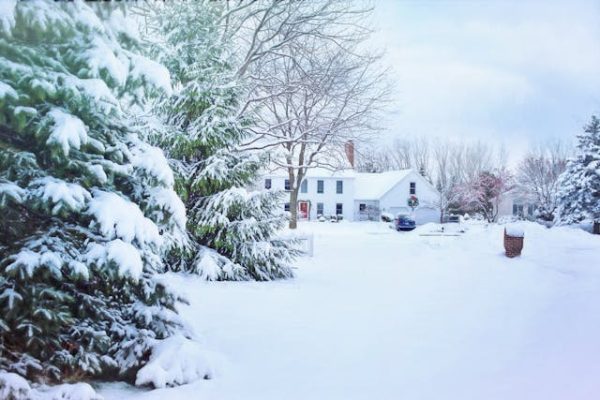It only seems a moment ago that we welcomed summer with open arms but the days are gradually getting shorter and there will soon be a chill in the crisp fall air. As winter approaches, it’s always beneficial to make sure your home is ready for the change in conditions. Being organized can save you time and effort and reduce the risk of problems down the line. In this handy guide, we’ll share some practical steps to prep your home for winter.

Photo by Jill Wellington
Clear your gutters
It’s that time of year again when the leaves fall from the trees and there’s a higher risk of storms, torrential downpours, and strong winds. The fall and winter months can wreak havoc in our backyards, leaving flower beds, walkways, and gutters full of debris and dirt. Clearing your gutters is a quick and simple DIY home maintenance job, but it can make a huge difference when cooler climes arrive. If your gutters are blocked, this prevents water from draining properly, which can result in pooling and leaks. Cleaning out the gutters frequently allows water to flow freely.
Check for signs of dampness and water damage
As it gets wetter, the risk of flooding, leaks, and damp patches increases. Before winter arrives, it’s wise to check for signs of dampness and water damage. It’s particularly beneficial to inspect high-risk zones frequently, including your roof, attic, basement, and bathrooms. Excess moisture can cause mold and add dampness, which may increase the risk of respiratory illnesses as well as damage to your property. If you can see discolored patches on the ceilings or walls, or there’s a musty smell in your basement, for example, seek professional advice. A reputable basement waterproofing company will be able to assess your home and suggest suitable solutions. Prevention is always better than cure when it comes to protecting your home from the elements. Keep up to date with routine checks and inspections and get minor issues checked out before they develop into more serious problems that are more expensive to fix.
Insulation and keeping warm
As temperatures drop, it’s important to keep your home as warm as possible. It’s no secret that it’s expensive to run your heating system constantly. To lower costs and reduce your carbon footprint, it’s a great idea to improve insulation. Insulation boosts heat retention and decreases heat loss. There are multiple ways to insulate your home, including adding cavity walls and loft insulation. Replacing old windows and doors and adding double or triple glazing can also help to keep rooms warmer for longer. If you’re looking to insulate your home, research local providers and compare quotes. Find out if you’re eligible for any grants or discounts before you agree on a price. Before it gets cold, it’s also helpful to check your heating system. If you’re overdue for a service, make an appointment before winter arrives.

Photo by Curtis Adams
Winter is fast approaching. Before we know it, the cozy season will be here. Before cooler climes arrive, try to be proactive in preparing your home. Clear your gutters, check for signs of water damage and dampness, and consider adding insulation to keep the cold at bay.

